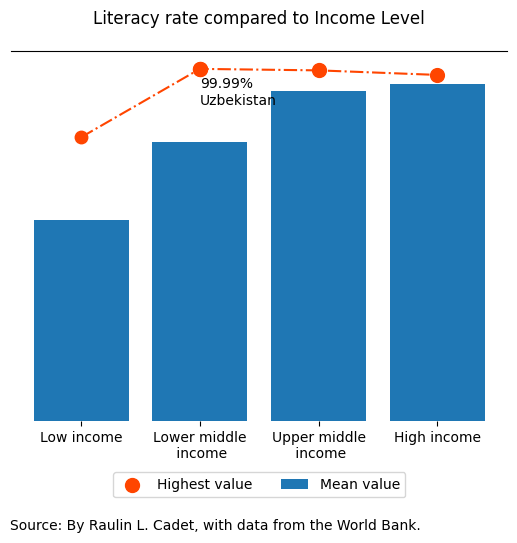Uzbekistan: Literacy Beyond Economic Barriers
By Raulin Cadet | Published Dec. 11, 2023 | Updated Dec. 12, 2023 | Topics: Income, Uzbekistan, Literacy rate, Education

Can countries with low income levels have a high literacy rate ? This post attempts to address this question, providing the case of Uzbekistan. It is known that Countries with high income tend to have high literacy rate. Does that mean that countries with lower income should reach a high income level comparable to the richest economies to be able to increase their literacy rate? If that were the case, raising the literacy rate would be possible through GDP growth.
Definitions: According to the World Bank glossary, literacy rate is the percentage of people ages 15 and above who can both read and write with understanding a short simple statement about their everyday life..Regarding income levels, the World Bank assigns the world's economies to 4 groups: low, lower-middle, upper-middle, and high income.
It is not a surprise that literacy rate is higher in high income countries. This blog article graphic shows this fact. However, it also reveals that the country with the highest literacy rate in 2022 is not from a country with high income level, and even not in the group of the upper middle income level. The country with the highest literacy rate is Uzbekistan, which is from the group of lower middle income countries.
Uzbekistan is a former URSS country, which became independent in 1991. During the years following its independence, Uzbekistan has conducted a reform in education, putting a large part of its budget to finance primary school. This effort may be one of the reasons for its high literacy rate.
The example of Uzbekistan shows that it is possible to raise the rate of literacy while working toward increasing income, while high income provides ways to finance education. It's plausible, in fact, that income and the literacy rate boost each other's growth.
